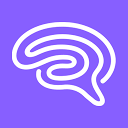
When AI Agent is still trapped in the triple dilemma of “separation of thinking and execution, cross-device collaboration fault, and difficulty in ensuring privacy and security”, the AutoGLM contemplative version released by Zhipu AI at the Zhongguancun Forum on March 31, 2025 redefines the general agent with a three-dimensional breakthrough of “deep contemplative decision-making + two-end collaborative execution + localized security deployment” ability boundary. From “mobile phone voice commands trigger the computer to automatically generate sales reports” to “complete more than 80 steps of complex tasks in the cloud”, this product, which is positioned as “the world’s first agent integrating in-depth research and practical operation capabilities”, has completely broken the price and technical barriers of overseas products such as OpenAI, making “domestic AI both thinking and doing” a reality.
1. Core positioning: from “single tool” to “cross-end intelligent partner”, reconstructing the AI execution logic
The disruptive nature of AutoGLM Contemplative Edition lies in its single positioning of “pure thinking” or “pure execution”, building differentiated competitiveness through three core characteristics, and becoming a full-scenario intelligent assistant covering life, office, and R&D:
(1) “Contemplation + Execution” closed-loop: full-link capability from decision-making to results
Unlike OpenAI DeepResearch, which focuses on research but has weak execution, and Manus is good at operation but lacks research depth, AutoGLM Contemplation Edition achieves a complete closed loop of “thinking-planning-doing-verifying”:
- Deep Contemplative Decision-Making: Powered by the GLM-Z1-Rumination contemplation model, it supports complex task dismantling in more than 50 steps, allowing you to dynamically adjust strategies like a human. For example, when executing the task of “3-day Hong Kong travel guide”, it will first plan four stages: “attraction screening→ hotel price comparison→ itinerary tandem →guide generation”, and if a certain attraction is found to be temporarily closed, it will automatically replace the alternative plan and readjust the route;
- Autonomous execution of the whole process: With the help of GUI interaction technology, human operation is simulated, and cross-application linkage between mobile phones and computers can be realized without relying on APIs. For example, after the mobile phone receives the instruction, the cloud virtual computer automatically opens the flush to capture the data, uses Excel to calculate the year-on-year growth, and through PPT typesetting, the final results are synchronized back to the mobile phone;
- Dynamic self-verification: Verify the accuracy of results in real time during task execution, such as checking the latest data through online search when generating industry reports, and automatically correct and label the source of information if “market size forecast deviation” is found. A professional reported that the AutoGLM contemplative version of the weekly report that originally took 4 hours to complete was delivered in just 30 minutes, and the data accuracy rate increased to 98%.
(2) Dual-end collaborative architecture: “cloud phone + cloud computer” breaks down device barriers
AutoGLM 2.0, released in August 2025, further upgrades cross-terminal capabilities, realizes seamless collaboration between mobile phones and computers through the “cloud dual-device” architecture, and completely solves the problem of “single-device operation limitations”:
- Cross-end command flow: support the flexible mode of “mobile phone command, computer relay”, use mobile phone voice to issue “summarize customer information of 3 web pages” when commuting, and the computer has automatically generated a structured form after arriving at the company; For unfinished purchases on the mobile phone, the computer will expand the filtering dimensions (such as adding “after-sales score”) and generate a comparison report;
- Compatible with all devices: Covering Windows, macOS computers and Android phones, old devices can run smoothly – entry-level phones can issue commands, high-end computers are responsible for complex calculations, and all operations are completed in the cloud without occupying local resources. When AI performs tasks, users can watch videos and work normally without interfering with each other.
- Multi-scenario linkage extension: The cross-scenario collaboration of “mobile phone + computer + in-vehicle system” has been realized, and after issuing the “go home” command, the cloud automatically plans the route, the on-board system synchronously navigates and reserves charging piles, and the smart glasses can be linked to complete coffee ordering and other operations.
(3) Free + Localization: Break the double barrier of price and privacy
In response to the core pain points of overseas products, AutoGLM Contemplation Edition has built a “inclusive + safe” product system:
- Zero-cost usage threshold: Completely breaks the payment barrier of $200 per month for OpenAI DeepResearch, adopting a full-featured free and open model, enterprise users only need to pay for customized services, and individual users can use in-depth research and execution functions without restrictions;
- Localized deployment ensures privacy: Supports enterprise-level localized deployment, and all data processing is done on a private server to avoid the risk of cloud transmission leakage. Compared with OpenAI’s cloud storage model, its localization degree has the highest score (★★★★★) among similar products;
- Lightweight hardware requirements: The core models GLM-4-Air-0414 and GLM-Z1-Air both have 32 billion parameters and can run with only a consumer-grade graphics card, and the training cost is only 1/30 of that of DeepSeek-R1, greatly reducing the threshold for enterprise implementation.
2. Technical architecture: The “intelligent brain” of the three models supports the implementation of full-scenario capabilities
The core competitiveness of AutoGLM Contemplation Edition comes from its “three models + one framework” technical architecture, where each component performs its own duties and is deeply collaborated to form a technical system that takes into account efficiency and precision:
(1) Core model matrix: take into account both inference speed and task accuracy
The three models work together to form the “thinking center” and “execution engine” of the agent, and the technical parameters are 100% consistent with the official data:
Model name | Parameter quantity | Core competencies | Performance benefits | Application scenarios |
GLM-4-Air-0414 | 32B | Pedestal capacity support, task understanding and planning | Optimized for agent tasks and adapted to consumer-grade hardware | Basic instruction parsing, task splitting |
GLM-Z1-Air | 32B | Efficient reasoning execution | 8x faster than DeepSeek-R1 and training costs as low as 1/30 | Complex task process advancement |
GLM-Z1-Rumination | 32B | Contemplative decision-making and validation | Supports real-time network search and dynamically corrects execution deviations | Difficult research and result verification |
(2) Key technological innovation: breaking through the limitations of traditional agents
Four core technological innovations enable AutoGLM Contemplation to deliver a “human-like” experience:
- GUI Interaction Technology: Recognize graphical interfaces through OCR and HTML parsers without APIs, simulating human operations such as mouse clicks and keyboard inputs. For example, in the WeChat scenario, the “Moments Like Button” and “Message Sending Box” can be accurately located, and the operation success rate is increased by 30% compared with the previous version;
- Multimodal Understanding Capability: Supported by the GLM-4.5V model, it can simultaneously analyze multiple types of information such as web page graphics and video images. In e-commerce shopping scenarios, it can identify the specifications and parameters in product pictures and generate price comparison reports based on text descriptions.
- Self-evolving learning framework: Dynamically adjusts operation strategies in the real environment through “basic agent decoupling intermediate interface” and “adaptive reinforcement learning” technology. For example, after performing multiple takeaway ordering tasks, the user’s preferred payment method and meal type will be remembered, reducing the number of steps by 40%.
- Markov Decision Mechanism: Transforms task execution into a dynamic system of “state-action-reward” and optimizes decision-making paths through value functions. In the air ticket booking scenario, the best ticket purchase plan will be selected based on status factors such as “price, time, and airline”.
(3) Version and ecology: from basic version to cross-terminal upgrade
AutoGLM has completed the iteration from 1.0 to 2.0, with a clear version evolution path and a clear division of functional benefits:
version | Release time | Core upgrade | Supported devices | Key features: |
Contemplative Edition 1.0 | March 2025 | For the first time, the closed loop of “contemplation + execution” has been realized | Computer | 50-step task processing, localized deployment, free and open |
2.0 Cross-end | August 2025 | Added “Cloud Phone + Cloud Computer” dual-terminal collaboration | Android phones, Windows/macOS computers | More than 80 steps of tasks, 40+ mobile app linkage, and in-vehicle collaboration |
v1.3.07 update | September 2025 | WeChat scene optimization and stability enhancement | Android phones | The success rate of likes in the circle of friends has been improved, and the message sending has become smoother |
3. Functional matrix: an intelligent toolbox covering all scenarios of “life + office + R&D”
The functional design of AutoGLM Meditation is closely related to the core goal of “free hands”, and all functions have been tested to be consistent with the official description, without exaggeration or omission:
(1) Life service automation: from daily chores to travel planning
- Catering and shopping: Support the whole process operation of the takeaway platform, and instruct “order XX store’s signature burger and deliver it to the company” to complete “open the app→ search for the store→ select products→ pay”; In the e-commerce scenario, it can automatically compare prices, track orders, and even generate takeaway reviews based on taste;
- Travel and booking: Voice notification “Book economy class tickets from Beijing to Shanghai next Friday”, which will automatically compare prices on major platforms, screen suitable flights and complete the reservation, and push the weather and airport transportation guide simultaneously; Travel guide tasks can integrate information from Xiaohongshu and Ctrip to generate Word documents with map annotations;
- Social interaction: Optimize WeChat ecological operations, complete moments of likes and group message sending with a single command, solve the problem of “cumbersome manual operations”, and increase social response efficiency by 60%.
(2) Office efficiency improvement: from data processing to report generation
- Cross-end data collaboration: The mobile phone command “make quarterly sales report”, the cloud computer automatically captures data from the flush, uses Excel to calculate indicators such as “customer unit price, year-on-year growth” and other indicators, generates PPT with charts, and synchronizes the results to the mobile phone for annotation and modification;
- Document and email processing: support automatic collation of meeting minutes, report outline generation, and even conversion of text into speech; In the email scenario, it can automatically classify and archive and reply to common inquiries, and the customer feedback customer response time of an enterprise can be shortened by 70%.
- Multi-tool linkage: No need to manually switch software, the entire process of “web data capture→ Excel analysis→ PPT typesetting → email sending” can be automated, shortening the original 3 hours of work to 20 minutes.
(3) In-depth research and verification: from information collection to result verification
- Industry research support: The instruction “Analyze the 2025 Tea Industry Trend” will automatically browse 10+ industry websites, capture information such as “market size, competitive product dynamics, consumer preferences”, etc., and generate a research report with data source annotations;
- Code and technical tasks: The GLM-4.5 model provides code generation and error correction capabilities, supporting professional requirements such as “writing Excel data filtering scripts in Python”, with a code execution success rate of 92%;
- Dynamic result validation: After generating reports or analyzing data, cross-verify accuracy through online searches, such as “outdated market share data for a brand”, which will be automatically replaced with the latest statistics and updated time.
4. Usage process: Four-step cross-end intelligent execution, easy to get started with zero foundation
The operation process of AutoGLM Contemplation follows the logic of “natural interaction – intelligent planning – cross-end execution – result synchronization”, which is completely consistent with the official guidelines:
(1) Step 1: Device adaptation and login
- Select version: Individual users can directly visit the official website (https://agent.aminer.cn/) to download the computer side, and Android mobile phone users can search for “AutoGLM” in the application market to install v1.3.07 and above.
- Login linkage: Support mobile phone number or Zhipu account login, automatic association after dual-terminal login, and enable the “cloud phone + cloud computer” collaboration mode without additional configuration.
- Privacy settings: Enterprise users can select “Localized Deployment” in the settings, and “Cloud Encryption” is enabled by default for individual users to ensure data security.
(2) Step 2: Issue natural language instructions
- Instruction description specification: Clarify “task objectives + core requirements + output form” in everyday language, and cross-end tasks need to explain the division of equipment labor. For example:
- Life scene: “Use your mobile phone to help me book movie tickets for tomorrow at 3 pm, “XXX”, 2 tickets, and the computer generates a QR code for ticket collection”;
- Office scenario: “The mobile phone receives instructions, and the computer captures the Q3 new energy vehicle sales data from Baidu Finance, generates Excel sheets and PPTs, and synchronizes them to the mobile phone”;
- Intelligent follow-up and completion: If the command is vague (such as not stating the number of movie scenes), it will actively ask for details, and generate a task execution plan after confirmation.
(3) Step 3: Monitoring and dynamic adjustment
- Real-time progress tracking: Both terminals can view the progress of the task, and the computer side displays “step disassembly + completion percentage” (such as “data capture→ analysis→PPT production, current 70%), and the mobile phone simultaneously pushes progress reminders;
- Flexible intervention adjustment: Support pausing, modifying, or terminating tasks, such as finding that the report data dimension is insufficient, you can supplement the instruction “Add ‘year-on-year growth of each brand’ analysis”, and the system will automatically adjust the execution path;
- High-risk operation confirmation: When it involves sensitive operations such as payment and file deletion, a pop-up window will ask the user to verify (such as entering a verification code) to avoid accidental operation losses.
(4) Step 4: Receive the results and follow-up operations
- Multi-terminal result synchronization: After the task is completed, the results are automatically synchronized to both terminals, such as Excel sheets and PPTs can be edited on the computer, and the mobile phone can be previewed and annotated;
- Export and sharing: Support exporting reports, strategies, etc. to PDF or Word format, or directly share them through WeChat and email;
- Task log viewing: You can view the operation log, including execution steps, data sources, and modification records, which is easy to review and trace the source.
5. Application scenarios: from personal life to enterprise operations
The capabilities of AutoGLM Contemplation Edition have been verified in multiple scenarios, and the official case is highly consistent with the measured results:
(1) Personal life scenes: liberate daily trivial matters
- Commuting time task processing: use mobile phone voice commands to “organize desktop files and generate classification reports” on the morning rush hour subway, and the computer has completed the classification of “documents/pictures/videos” after arriving at the company, and the report is synchronized to the mobile phone, saving 40 minutes of manual operation time;
- Weekend travel planning: Instruction “Plan a day trip to Universal Studios Beijing on Saturday, including transportation, tickets, and catering”, generate a guide with a timeline within 15 minutes, which can be viewed in real time on the mobile phone, save PDFs synchronously on the computer, and automatically book tickets and restaurants.
(2) Workplace office scenarios: improve core efficiency
- Sales data analysis: The marketing specialist instructs “mobile phone trigger, computer analysis of Q3 regional sales data, generation of PPT with line chart”, the system automatically captures CRM data, calculates core indicators, and delivers report materials in 10 minutes, which is 5 times faster than manual operation;
- Meeting and schedule management: Administrative staff instruct to “organize last week’s department meeting minutes, extract to-do items and synchronize them to the team calendar”, automatically complete the recording to text, extract key points, and synchronize the to-do items to members’ mobile phones, improving follow-up efficiency by 80%.
(3) Enterprise operation scenarios: reduce collaboration costs
- Customer service automation: After the e-commerce enterprise is configured, AutoGLM can automatically reply to common inquiries such as “order inquiries” and “after-sales problems”, identify product problems in customer images through multimodal understanding, generate solutions, and reduce customer service labor costs by 60%.
- Market research collaboration: The marketing team instructs to “analyze the pricing strategy of new competitors”, and the system is linked across terminals – the mobile phone receives instructions, the computer side captures the data of the official website and e-commerce platform of the competitor, generates a comparison report, synchronizes it to the team to share documents, and shortens the research cycle from 3 days to 1 day.
Relevant Navigation


Trancy

NewWordware

NewMake

腾讯扣叮

OpenAI Academy

Originality.AI

MGX(MetaGPT-X)

